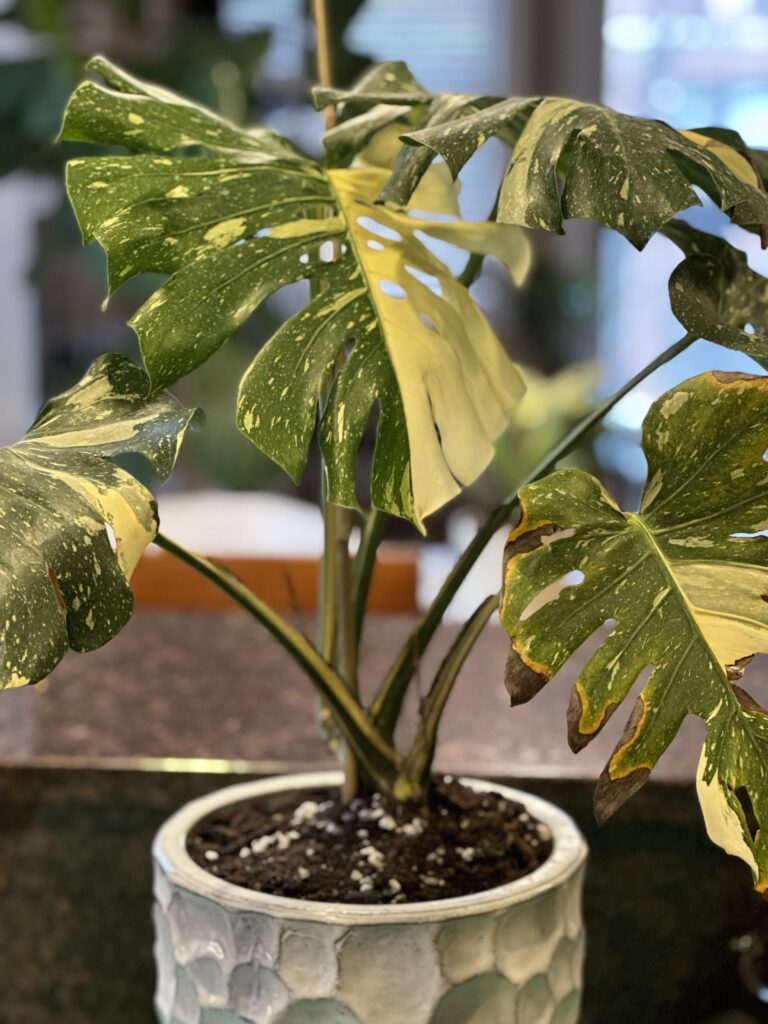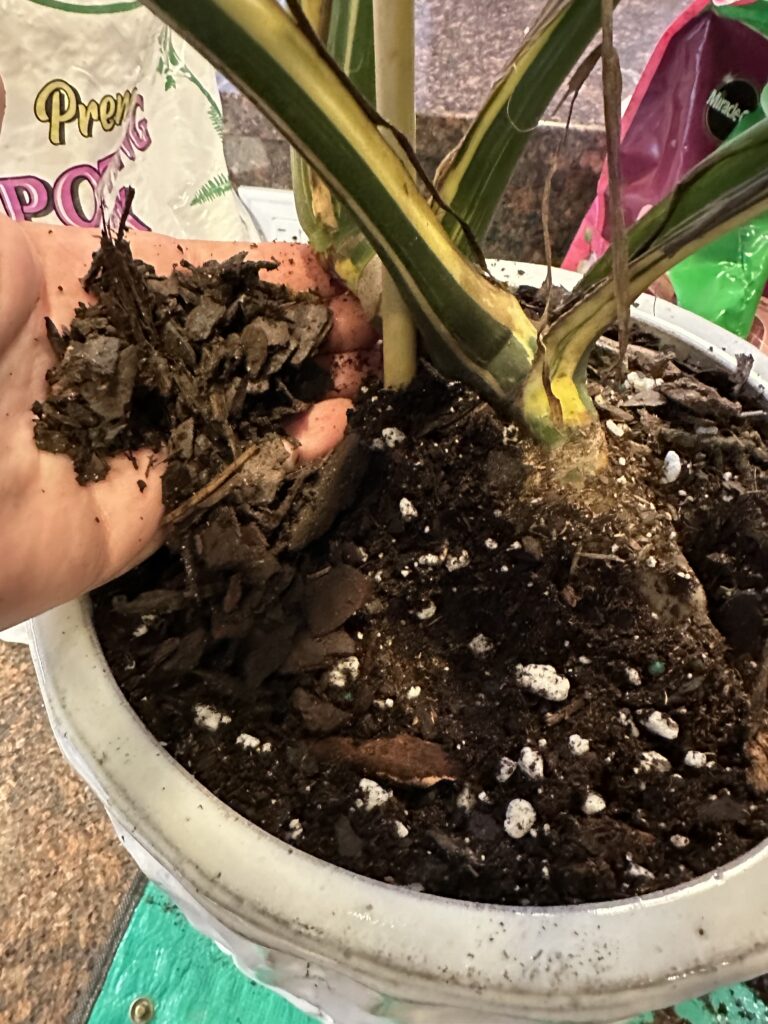Understanding the Importance of Soil Mix for Monstera Plants
When it comes to the care and nurturing of your beloved Monstera plant, there is one factor that stands above the rest in terms of importance: the soil mix. This magical concoction of nutrients, drainage capabilities, and aeration properties is the key to unlocking your Monstera’s full potential.
Monstera Soil and Plant Nutrition
First, let’s talk about the relationship between Monstera soil and nutrient availability. Monstera plants are not your average green buddies; they require a soil mix that is jam-packed with all the essential nutrients they need to thrive. Healthy Monstera plants will develop their signature large, fenestrated leaves only if their conditions are perfect, and the plant has enough strength to produce new leaves, something that is very energy-intensive for your plant. This is especially true for rarer varieties, such as the Thai Constellation Monstera that have stunning creamy white patterns that completely lack chlorophyll, meaning the plant can’t produce as much energy as it’s all-green counterparts.
Think of soil as a gourmet meal for your plant. A good soil mix should contain organic matter like compost or well-rotted manure, which slowly releases those precious nutrients over time. These nutrients are like fuel for your Monstera’s growth, leaf development, and overall health. So, a nutrient-rich soil mix is an absolute must if you want your Monstera to flourish like never before.
The Importance of Water Drainage
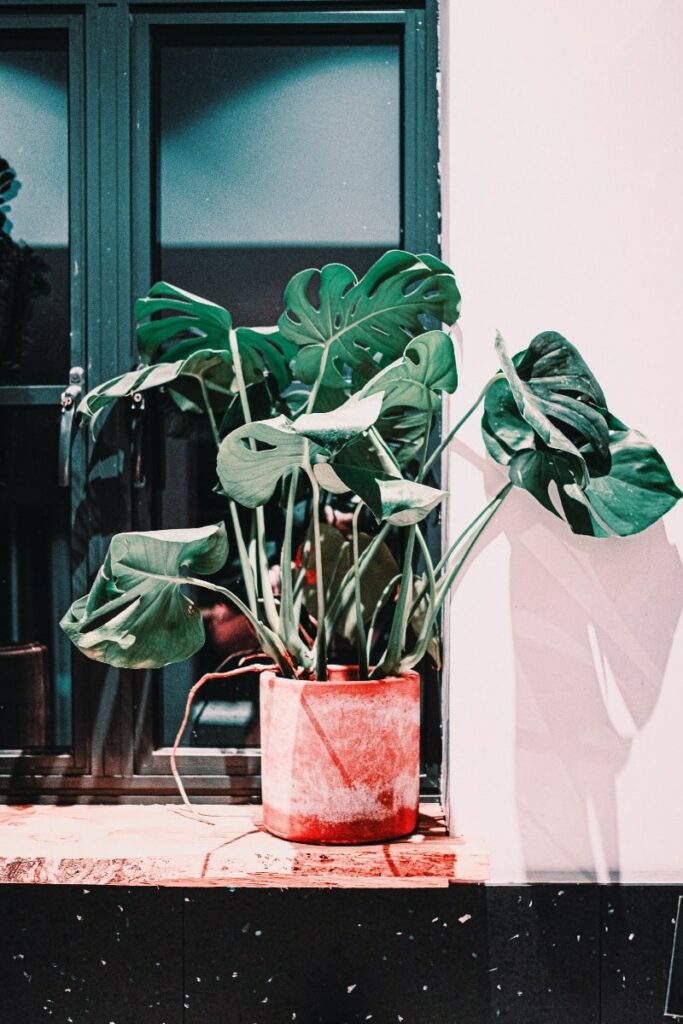
Monstera plants are not fans of soggy roots and can easily develop root rot. To keep your Monstera healthy, they need a soil mix that allows water to flow freely, preventing any waterlogged disasters. A soil mix that retains too much moisture can suffocate those delicate roots and lead to the dreaded root rot and other nasty diseases. To avoid this catastrophe, it is crucial to incorporate materials like perlite or coarse sand into your soil mix.
These little heroes create tiny air pockets within the soil, giving excess water a chance to escape and keeping your Monstera’s roots healthy and happy. Just like humans need oxygen to survive, Monstera plants need it too, especially for their roots. Oxygen is the key to root respiration and nutrient uptake, so a well-aerated soil mix is an absolute game-changer. To achieve this, consider adding materials like perlite or vermiculite to your soil mix. These magical ingredients create even more air pockets, ensuring that your Monstera’s roots have all the space they need to breathe freely and do their thing. Even better, they are inexpensive, and readily available online or at most garden centers.
Soil Levels and pH Balance
Monstera plants have a preference for slightly acidic to neutral soil, with a pH range of 5.5 to 7.0. Maintaining the correct pH balance is crucial for nutrient availability and overall plant health. So, it’s a good idea to test the pH of your soil mix and make any necessary adjustments to ensure that your Monstera can absorb those precious nutrients efficiently. Luckily, our recipe includes ingredients that help your plant fall within the perfect pH range. Later in this article, we’ll also do a deep dive on signs that your pH levels may be off, and how to get them back within a healthy range.
Organic Matter and Nutrients
Last but certainly not least, let’s not forget about the wonders of organic matter. Adding organic matter to your soil mix is like giving your Monstera a luxurious spa treatment. It improves soil structure, enhances water retention, and promotes beneficial microbial activity. So, don’t hesitate to incorporate compost, well-rotted manure, or leaf mold into your soil mix. Your Monstera will thank you for it.
The importance of a well-balanced soil mix for your Monstera plant cannot be overstated. It is the foundation upon which your plant’s health and growth depend. So, take the time to create the perfect soil mix recipe, one that is nutrient-rich, well-draining, well-aerated, and pH-balanced. By doing so, you will provide your Monstera with the ideal growing environment, ensuring that it thrives and becomes the showstopper of your indoor or outdoor space.
The Essential Components of a Monstera Soil Mix
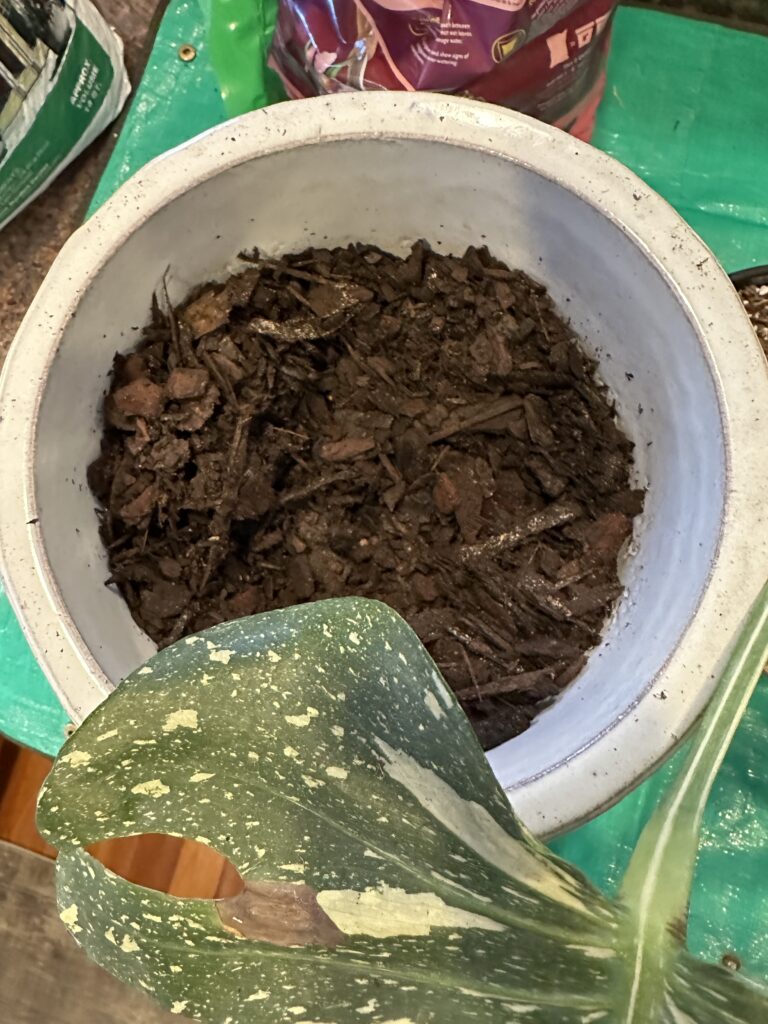
When it comes to concocting the ultimate soil mix for your beloved Monstera plant, there are a multitude of crucial components that demand your attention. These components are the key to providing your Monstera with the vital nutrients, impeccable drainage, and optimal aeration it so desperately craves in order to flourish in all its verdant glory.
Organic Potting Soil Base
First, we must lay the groundwork for our Monstera soil mix by selecting a high quality potting soil. Seek out a well-draining blend that boasts an abundance of organic matter. Avoid heavy garden soils or those teeming with clay, for they possess the treacherous ability to retain excessive moisture, ultimately leading to the dreaded root rot.
Perlite and Pumice to Promote Aeration
Next up is perlite or pumice that promote healthy drainage and aeration. These lightweight marvels create ethereal air pockets within the soil, preventing compaction and granting the roots the precious gift of respiration. Aim for a ratio of 1 part perlite or pumice to 2 parts potting soil for your mix.
Chunky Organic Materials
Orchid bark or coconut coir is next on our list for chunky organic material. These captivating materials allow us to mimic the natural habitat of our Monstera plants. As epiphytes, they thrive by climbing up other plants, using their roots to anchor and grow upwards. By introducing orchid bark or coconut coir into our soil mix, we create a haven of moisture retention and impeccable drainage, thus fashioning an idyllic environment for our Monstera’s precious roots to call home. These wondrous additions infuse our concoction with essential nutrients and enhance the very structure of the soil itself. Compost, in particular, serves as a benevolent bestower of slow-release nourishment, fostering robust growth and imbuing our Monstera with an undeniable vigor. Aim for a ratio of 1 part compost or organic matter to 3 parts potting soil.
Adding Nutrients
Finally, it’s time to add in organic materials to help Monsteras get nutrients from the soil – worm castings! These somewhat gross remnants of our wriggling friends, also known as vermicompost, possess an unparalleled wealth of organic fertilizer for your Monstera plants. Add a dash of these miraculous worm castings to your soil mix, (approximately 10% of the total volume) and witness the magic unfold before your very eyes.
To ensure a steady supply of nutrients for our Monstera over time, we must consider the incorporation of a slow-release fertilizer into our soil mix. Seek out a balanced fertilizer, specially formulated for the delicate needs of houseplants, and follow the instructions of its wise manufacturer for optimal application rates.
The key to a triumphant soil mix lies in the delicate balance between moisture retention and impeccable drainage. Keep a watchful eye on the moisture levels within the soil and adjust your watering practices accordingly. With the perfect soil mix as your ally, your Monstera shall possess a sturdy foundation for unparalleled growth and a breathtaking display of foliage that will leave all who behold it in awe.
Step-by-Step Recipe: Creating the Best Monstera Soil Mix
To ensure that your Monstera thrives and reaches its full potential, it is of utmost importance to concoct the perfect soil mix. Here is an intricate, step-by-step guide that we love for our Monstera Deliciosa plants as well as variegated varieties like our Thai Constellation Monsteras:
Step 1: Assemble the Ingredients
For this recipe, you’ll need:
- Organic potting soil (store-bought, or equal parts peat moss, perlite, compost)
- Orchid Bark or Coconut Coir
- Compost and/or Worm Castings
Step 2: Prepare the Potting Soil Mix
Begin this enchanting journey by pouring your organic store-bought potting soil into a vast container or bucket, ensuring that it is fresh devoid of any pesky pests or diseases. It’s also a good idea to gently mist dry potting soil to help prevent dust particles from irritating your eyes and lungs. Alternatively, if you fancy a touch of creativity, you may concoct your very own potting soil mix by blending equal parts of peat moss, perlite, and compost.
Step 3: Infuse Perlite or Pumice
Note: If your store-bought potting soil already contains course perlite or pumice, feel free to skip this step!
Infuse the potting soil with 1 part perlite or pumice to 2 parts potting soil, mixing until your soil is well incorporated. This will ensure the soil doesn’t compact over time, while promoting proper root aeration and growth.
Step 4: Add-in Orchid Bark or Coconut Coir
To further enhance your soil’s drainage capabilities, introduce the captivating presence of orchid bark or coconut coir to the mix. These extraordinary materials possess the ability to retain moisture while simultaneously allowing excess water to gracefully drain away. Aim for a harmonious ratio of 1 part orchid bark or coconut coir to 3 parts of your mixed potting soil. Mix until the integration is nothing short of perfection!
Step 5: Introduce Worm Castings or Compost
Finally, it’s time to introduce worm castings or organic compost to the soil mix. These help enrich the soil and foster the growth of a healthy, vibrant Monstera. Aim for a harmonious ratio of 1 part worm castings or compost to 4 parts potting soil. Mix until the nutrients are evenly distributed.
Step 6: Fill your Pot
With your soil mix masterpiece in hand, it is time to fill a pot with this wondrous creation, ensuring that ample space is left for the Monstera’s roots to spread and explore their newfound home. With gentle hands, place the plant in the pot, ensuring that the roots are lovingly covered with soil. Press the soil ever so lightly to secure your Monstera without damaging its roots.
Step 7: Water and Monitor
Having completed this arduous yet rewarding journey, it is now time to quench the thirst of your Monstera to help the plant adjust to its new home and soil. Water it well, allowing the liquid to flow out the bottom drainage holes for up to a minute. Regularly monitor the moisture levels, for it is your duty to water the plant when the top inch of soil feels as dry as the desert sands. Beware, dear friend, of the perils of overwatering, for it may lead to the dreaded root rot, a fate no Monstera should ever endure.
🌿Related Guide: Picking the Perfect Monstera Plant Pot >
Adjusting the Soil pH (if necessary)
Creating the ultimate Monstera soil mix shouldn’t require you to know your soil ingredient’s pH level, but we’ll dive in a bit should you be experiencing issues with your plant. Monsteras prefer slightly acidic to neutral soil, usually within a pH range of 5.5 to 7.0. Nevertheless, the pH level can exhibit variability, influenced by the geographical location and the soil type employed.
To get the pH level of your soil, you can procure a soil pH testing kit from your local garden center or the vast realm of online shopping. If, by chance, the pH level strays beyond the recommended range, it’s not difficult to tweak the range back within normal parameters for your plant.
Raising Monstera Soil pH Levels
In the event that the soil leans towards the acidic side (pH below 5.5), you can elevate the pH level by incorporating lime or dolomite lime into the soil mix. These additions boost the presence of calcium and magnesium, which work their wonders by neutralizing the acidity. Commence this process by adding small amounts of these ingredients, and test your pH levels again, repeating this until it finally falls within the desired range.
Lowering Monstera Soil pH Levels
On the flip side, if the soil leans towards the alkaline end of the spectrum (pH above 7.0), you can lower the pH level by introducing organic matter, such as peat moss or compost, into the soil mix. These materials, with their slightly acidic nature, possess the power to restore equilibrium to the pH. Once again, adding small quantities at a time before testing, until the pH level once again falls within the recommended range.
Adjusting the soil pH should be executed with a gentle touch, avoiding any abrupt shocks to the delicate roots of your Monstera. These plants possess a sensitivity to sudden pH fluctuations, thus it is wise to embark on this journey of adjustment gradually, allowing time to work its magic.
Vigilantly monitoring the pH level of your Monstera soil mix stands as a pivotal task, one that holds the key to the plant’s well-being and its journey towards optimal growth. By ensuring that the pH level resides within the recommended range, you are bestowing upon your Monstera the gift of an idyllic habitat, where it can flourish and thrive, showcasing its true magnificence.
Common Mistakes to Avoid with Monstera Soil
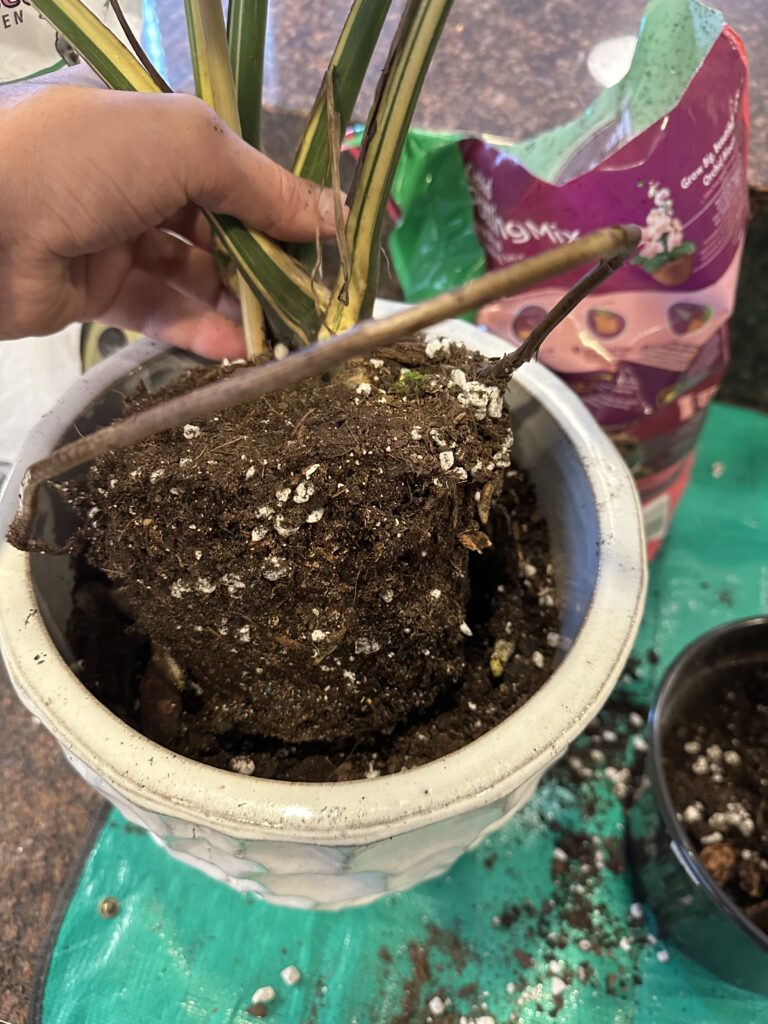
With the right recipe in mind, let’s dive into the world of soil mixes and explore some common mistakes that plant owners tend to make.
Monstera plants are not fans of heavy or compacted soil. They crave a soil mix that allows excess water to flow through easily, preventing any waterlogged roots. Trust me, you don’t want your Monstera to suffer from root rot or fungal diseases. So, steer clear of regular garden soil or clay-based soil. Instead, opt for a potting mix that boasts ingredients like perlite, vermiculite, or pumice. These magical ingredients will work wonders in improving drainage and keeping your Monstera happy and healthy.
Monstera Soil to Encourage Water Balance
Now, let’s move on to the notorious mistake of overwatering your Monstera plant. Ah, the classic blunder that many plant owners fall victim to. Monstera plants do enjoy slightly moist soil, but they definitely don’t appreciate sitting in water as they are notoriously prone to developing root rot. To avoid this issue altogether, allow the top inch of soil to dry out before you even think about watering again. Use your finger into the soil to check for moisture levels. Only water when that top inch feels dry. And if you notice water droplets “sweating” or “crying” on the edges of your Monstera leaves, this is your plant telling you that it’s perfectly hydrated, and that you can wait to water for a few days. Remember, it’s always better to underwater than to overwater your precious Monstera.
Aerating Your Monstera Soil
Ah, the importance of aeration! This is something that should never be underestimated when it comes to your Monstera’s soil mix. You see, these plants have aerial roots that require good airflow to truly thrive. So, when you’re on the hunt for the perfect soil mix, make sure it’s well-aerated. Say no to dense or compacted soil mixes that can suffocate those precious roots. Instead, consider adding ingredients like perlite or orchid bark to your mix. These large and chunky organic additions will work their magic in improving aeration and keeping your Monstera’s roots happy and healthy.
Now, let’s talk about neglecting to repot when necessary. Monstera plants are known for their rapid growth, and they can quickly outgrow their pots. It’s also widely known that these plants don’t mind being kept in smaller containers. Sadly, some people take this to the extreme, and notice they need to repot their Monstera plants only once the roots have become incredibly root-bound.
Neglecting to repot your Monstera when it becomes root-bound can have serious consequences like stunted growth and nutrient deficiencies. So, keep a close eye on that root system. If you notice roots circling around the pot or emerging from the drainage holes, it’s time to take action. Repot your Monstera into a larger container with fresh soil, and watch it thrive like never before.
Avoiding Soil Mixes with High Salt Content
Last but not least, let’s address the issue of soil mixes with high salt content. Some commercial potting mixes out there may contain alarmingly high levels of salt, and that can spell trouble for your Monstera. We’re talking leaf burn and hindered nutrient absorption. To avoid this issue, opt for a high-quality, organic potting mix that’s specifically formulated for indoor plants. And here’s a little secret – occasionally flushing the soil with water can help remove any accumulated salts. Your Monstera will thank you for it!
By avoiding these common mistakes and following these tips, you can ensure that your Monstera plant thrives in a soil mix that’s fit for royalty. So, remember to choose a well-draining soil, water with caution, provide ample aeration, repot when the time comes, and steer clear of those sneaky soil mixes with high salt content. With the right soil mix, your Monstera will flourish and become the crown jewel of your indoor jungle. Happy gardening!
Frequently Asked Questions
What type of soil is best for Monstera plants?
The best soil for Monstera plants is a well-draining potting mix that retains some moisture. A mix that consists of equal parts of peat moss, perlite, and a good quality potting soil is ideal. This combination provides the right balance of water retention and drainage, allowing the roots to breathe and preventing waterlogged conditions.
Can I use regular garden soil for my Monstera plant?
No, it is not recommended to use regular garden soil for Monstera plants. Garden soil tends to be heavy and may not provide the necessary drainage that Monstera plants require. Additionally, garden soil may contain pests, diseases, or weed seeds that can harm your plant. It is best to use a well-balanced potting mix specifically formulated for indoor plants.
Should I add fertilizer to the soil mix?
Yes, adding a slow-release fertilizer to the soil mix can benefit your Monstera plant. Choose a balanced fertilizer with equal amounts of nitrogen, phosphorus, and potassium. Follow the instructions on the fertilizer packaging for the correct dosage and frequency of application. Fertilizing once every two to four weeks during the growing season is generally sufficient to promote healthy growth.
How often should I water my Monstera plant?
The frequency of watering your Monstera plant depends on various factors such as the size of the pot, environmental conditions, and the moisture retention capacity of the soil mix. As a general guideline, water your Monstera when the top inch of soil feels dry to the touch. Avoid overwatering, as it can lead to root rot. It is better to underwater slightly than to overwater.
Can I use a self-watering pot for my Monstera plant?
While self-watering pots can be convenient, they may not be the best choice for Monstera plants. These plants prefer a well-draining soil mix, and self-watering pots can sometimes lead to waterlogged conditions. If you choose to use a self-watering pot, monitor the moisture levels closely and adjust the watering frequency accordingly to prevent overwatering.
Should I repot my Monstera plant regularly?
Monstera plants generally prefer to be slightly root-bound, so repotting too frequently is not necessary. However, if you notice that the roots are tightly packed and there is limited soil space, it may be time to repot your Monstera. Repotting every 1-2 years, preferably during the spring season, allows the plant to have fresh soil and room for growth.

